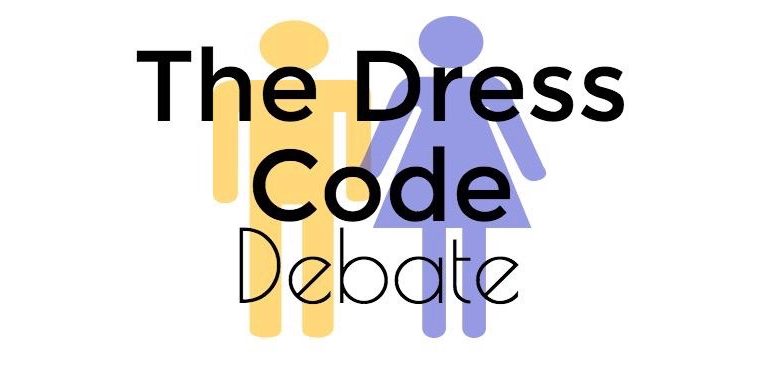The student dress code at Westhill is created by the board of education in order to promote what they think is appropriate for a school atmosphere. When questioned, the administration is quick to imply that these rules are enforced, but how many students have actually read these set restrictions?
The student handbook, which contains the restraints that students are required to follow, seems to be something that is talked about, but never physically offered to the student population. Therefore, it is imperative to pull the dress code description straight from the handbook in order to really understand the bias these regulations contain. The student handbook states, the dress code “encourages students to dress in a manner that reflects pride in and respect for themselves, their school, and their community. To promote a positive, safe and non-disruptive learning environment, proper attire should be worn.”
At first glance, this sounds very reasonable. The point of school is to learn, and anything to get in the way of that should be controlled. What follows this description is a list of rules one would expect; no obscene writing or pictures, nothing which correlates to drug use, and nothing to be affiliated with gang violence. Additionally, there is the restriction which everyone knows, no inappropriate skin should be shown. According to the handbook, this includes the upper thigh, abdomen, chest, and breasts. The appendages listed do apply to both sexes, so why is this rule only enforced for the females at Westhill?
The halls are filled with students, who believe it or not, have skin. This does not seem to be an issue until the weather turns warm and as a biological essential, humans adapt their clothing. Less clothes are needed to stay cool, and out comes the skin. This is when the “non-disruptive learning environment” is put in jeopardy.
There is a commonly used argument that boys get distracted with what girls wear at school. When asked if what someone wears is an issue, Peyton Lennard (’16) answered no, but confessed that “if her butt is showing, that’s different.”
Junior Matt Dziemian defended females by saying, “fashion is very influential, and places these days don’t sell dresses down to your ankles.”
The restrictions in the dress code don’t only include the covering of skin, but also the prohibition of any article which includes disruptive or obscene writing or pictures, and or anything which associates to drugs. Look anywhere in the school and there is a good chance you will see all three of these “rules” being broken. Shirts with graphics of provocative women, socks with marijuana emblems, even just the simple inappropriate background on a phone are conditions proudly displayed by all students. This clear violation is never dealt with, or even thought to be as serious as a girl with a low cut shirt.
Additionally, wearing a big ring or a spiked bracelet is prohibited according to the student handbook. “I didn’t even know that was rule,” confessed Ms. Benedict, who has been asked by supervisors to strictly enforce the dress code. This in itself highlights the inconsistency of the dress code’s enforcement.
Overall, there is a lack of knowledge about the dress code, which creates a sexual bias. Teachers only enforce the rules that they know about, which is most commonly the covering of skin. Because of society’s view of their bodies, women suffer the most. The dress code automatically corresponds to females bodies, and the simple things like rings and graphic t-shirts are forgotten about. The general knowledge of what the dress code is should be heightened in order to aid in this problem suffered by the students at Westhill.





